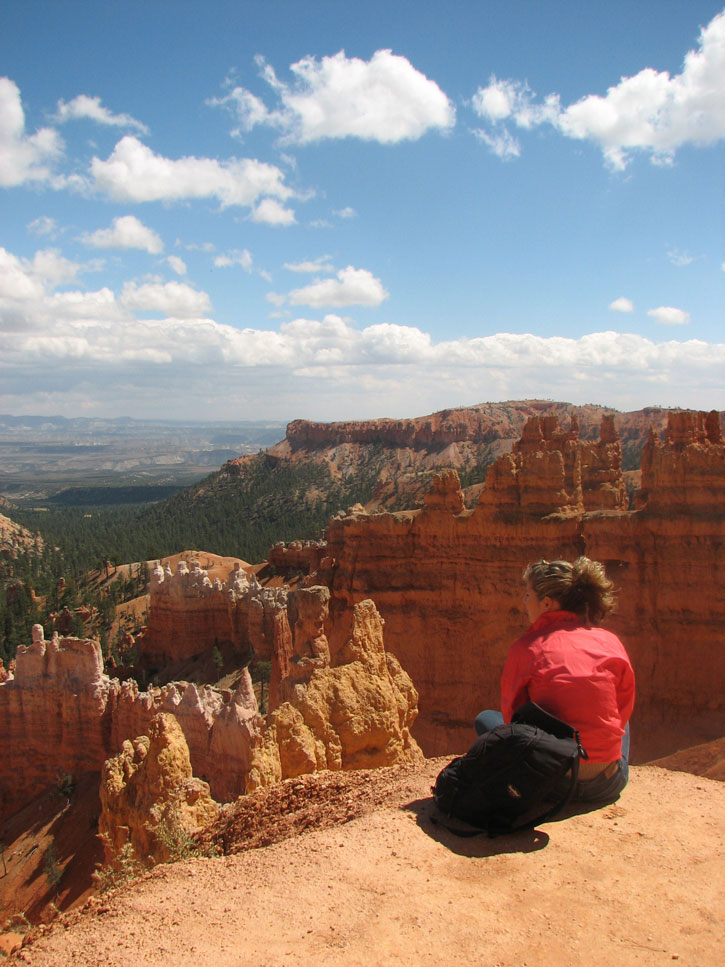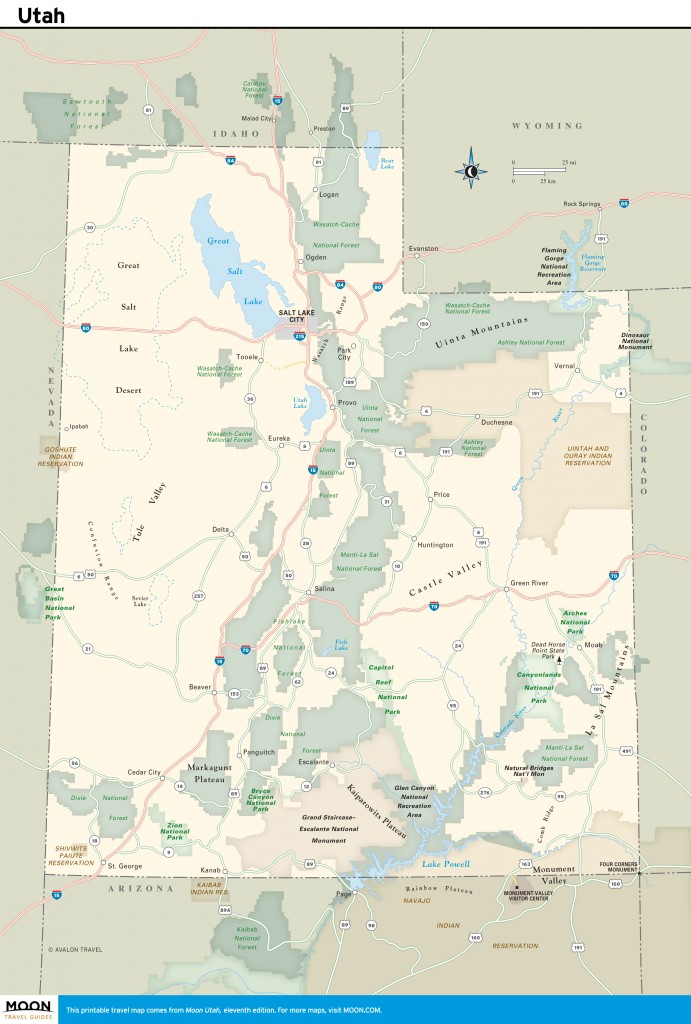The parks are all open year-round, although spring (Apr.-early June) and early fall (Sept.-Oct.) are the most pleasant times to visit. They are also the busiest seasons, and travelers may find that popular campgrounds and hotels are booked well in advance.
Spring rain can also dampen trails, and late winter-early spring storms can play havoc with backcountry roads. Bryce Canyon, at 6,600-9,100 feet, can be snowy well into the spring, but it is pleasant during the summer when other areas of southern Utah bake.

Short hikes lead to stunning scenic overlooks in Bryce National Park. Photo © Bill McRae.
A few highways close for the winter, most notably the roads around Cedar Breaks National Monument. However, winter can be a great time to visit the high country around Bryce, where cross-country skiers take to the park roads. Around Escalante, the canyons can be quite nice in the winter during the day, but nights are freezing. In Canyonlands and Arches, winter days tend to be bright and sunny, but nighttime temperatures can dip into the teens or lower.
Thunderstorms are fairly common in summer (late July-early Sept.) and bring the threat of flash flooding, especially in slot canyons. In Canyonlands, Arches, and Moab, summer temperatures can reach the 100s.

Utah
Excerpted from the Sixth Edition of Moon Zion & Bryce.